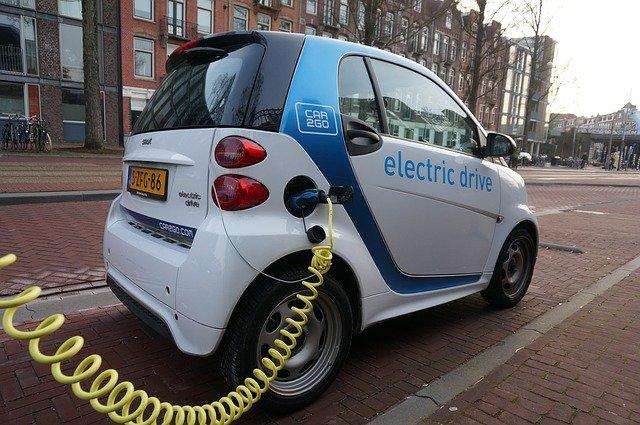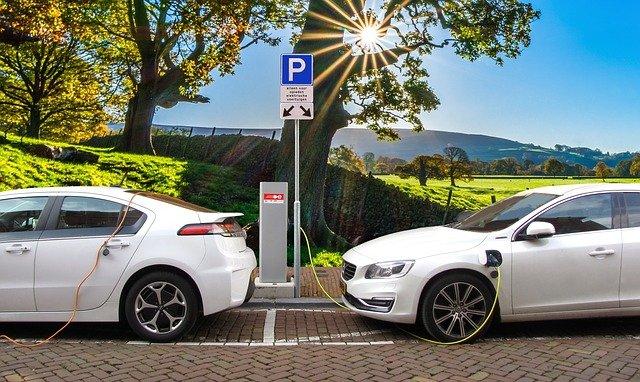The concept of an electric car is not new again, it’s already in the market.
It’s quiet, emission-free, more comfortable, and saves energy.
The batteries of electric cars are a bit expensive, thus, making fuelless cars not affordable for everyone.
While electric vehicles are expensive than traditional cars, e-cars are way cheaper when you consider the lower energy consumption, maintenance, and wear costs.
The number of electric models and their battery capacities are growing.
With the possibility of electronic cars covering between 200 and 450 kilometers, it’s suitable for personal use, and for transport business to some extent.
In the future, there’s a strong hope that chargeable cars will be able to cover longer distances with the appropriate fast charging technology.
The components of Electric Cars
The basis of the electric car is the chargeable battery.
Further components are the electric motor, electronic power system, electric cooling systems, and temperature management.
Units such as the steering, braking device, and heating/air conditioning are operated electrically.
The 12-volt on-board network is also supplied by a voltage converter from the high-voltage battery.
The battery management system regulates charging processes and performance during operation.
Electric motor
The electric motor was patented as early as 1837, and it has been used in craft and electric trains.
It has proven to be the ideal drive machine – extremely efficient in its use of energy: reliable, low-wear, almost noiseless, and vibration-free.
With an electric motor, full torque is available over a large speed range right from the start. Therefore, a gearbox with a fixed ratio (only one gear) is sufficient for most applications.
In particular, the driving comfort of the low-noise drive without annoying gear changes and the driving pleasure are some of the many advantages of electric cars.
Lithium-ion battery
The most important requirements for the battery of an electric car are high energy and power density – it’s important for driving performance as well as safety and functionality.
Almost all vehicle manufacturers are concentrating on the lithium-ion battery, as this best meets the requirements and also has development potential.
Lithium-ion batteries are also characterized by their high cycle stability (charge/discharge).
For some time now, they have also been standard equipment for small electrical devices such as cell phones, notebooks, and wireless devices.
The batteries used in electric cars have a sophisticated thermal management system.
This significantly ensures a long service life for the battery cells.
Also, it ensures that the cells do not overheat and, thereby, controls the temperature and power output when it is cold.
Battery cells are available in three common designs – Round, prismatic (rectangular), or pouch cells.
Are electric cars safe?
Electric cars have been reviewed and considered safe when manufactured in accordance with international practices and standards.
To make electric cars safe, the battery has to be protected and housed properly in order to prevent it from being deformed and damaged, especially during an accident.
To prevent this from happening, high-voltage batteries are housed in protected areas with a sturdy battery housing made of steel or aluminum.
If the battery housing is no longer able to withstand extreme loads, in the worst-case charges can be lost ( the so-called “thermal runaway”).
If an accident occurs and the battery is burning, then it must be extinguished with plenty of water. However, such cases are extremely rare, as the current flow of the battery is immediately interrupted by an emergency stop mechanism in the event of an accident.
Electric car battery production
The production of electric car batteries is costly. This can be traced to the cost of the coated metal foils, the use of valuable raw materials, and others.
Even if solid-state batteries are traded as next-generation energy storage, experts say there is still a lot of potential in lithium-ion batteries.
With advancing technological development and increasing battery numbers, both further falling battery prices and improvements in energy density are to be expected.
Ideally, batteries are made with 100 percent renewable electricity. If this does not happen, your life begins with a corresponding CO₂ exposure. The bigger the battery, the bigger your CO₂ backpack.
How realistic are the Distance ranges?
The realistic range in everyday life is a decisive factor for the acceptance of electric cars.
More than half of those surveyed by Techpally expect their electric vehicle to have a range of over 300 kilometers without an annoying charging break.
For a long time only expensive luxury electric cars could meet these range requirements, but the market now offers several vehicle models at lower prices.
Examples of Road Test
The Hyundai Kona Electric and the Kia e-Niro can travel well over 400 kilometers on one battery charge, according to the manufacturer.
However, buyers should take into account that the manufacturer’s specifications can hardly be achieved in real driving conditions – regardless of whether they are using the new WLTP or the old NEDC measurement method.
An Autotest had shown that the ranges in the practical EcoTest mix are generally almost 20 percent below the WLTP value and 40 percent below the NEDC manufacturer’s specifications.
For example, Hyundai Kona Electric with 64 kWh battery: While the manufacturer specifies the range in the brochure as “up to 449 kilometers” according to the WLTP, the value in the Techpally Eco test is 375 kilometers – despite the difference, it is still a very good range.
Factors affecting the Distance range
The power consumption of an electric car results from the amount of driving energy used (depending on the operating conditions), the efficiency of the battery (internal resistances, battery heating, and cooling, self-discharge), the performance of the charger (charging losses) and the needs of the ancillary units (mainly interior air conditioning ).
The range that can be achieved in everyday life largely depends on driving behavior, the outside temperature, the weather conditions, and the use of electrical consumers such as heating or air conditioning.
Electric cars are very efficient in the city but at higher speeds on the freeway, power consumption increases significantly and the range is noticeably reduced.
To optimize range, electric cars offer an eco-driving mode, and some energy-saving heat pumps are available.
Because heating in electric cars requires a lot of electricity and often significantly reduces the range.
The additional consumption or loss of range depends on the outside temperature, the driving profile, and the heating technology (efficiency) of the vehicle.
Basically, electric cars use between 10 and 30 percent more energy in winter, and in extreme cases up to 50 percent more energy.
The range is reduced accordingly. Short journeys and repeated heating of the car drive up the energy requirement.
Some manufacturers, therefore, offer their electric cars with a heat pump that uses battery energy up to four times more efficient for heating.
The energy requirement for air conditioning in summer is noticeably lower compared to heating.
Conclusion
High prices, limited ranges, and necessary charging breaks on longer journeys are some of the barriers to using electric cars.
However, with increasing technological advancement, costs will continue to be reduced.
In addition, the charging infrastructure is becoming denser, and charging technology is developing further.
The energy transition and efforts by manufacturers also ensure that the eco-balance will also improve with more sustainable production of electric cars and batteries.
These measures can make electric cars more competitive and always more interesting for a broader target group













